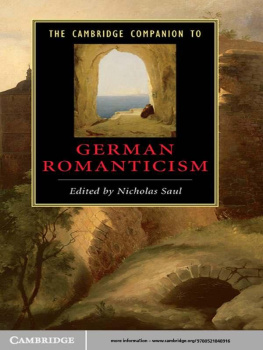Sprawson - Haunts of the Black Masseur
Here you can read online Sprawson - Haunts of the Black Masseur full text of the book (entire story) in english for free. Download pdf and epub, get meaning, cover and reviews about this ebook. City: London, year: 2009;2012, publisher: Knopf Doubleday Publishing Group;Vintage Books, genre: Detective and thriller. Description of the work, (preface) as well as reviews are available. Best literature library LitArk.com created for fans of good reading and offers a wide selection of genres:
Romance novel
Science fiction
Adventure
Detective
Science
History
Home and family
Prose
Art
Politics
Computer
Non-fiction
Religion
Business
Children
Humor
Choose a favorite category and find really read worthwhile books. Enjoy immersion in the world of imagination, feel the emotions of the characters or learn something new for yourself, make an fascinating discovery.

- Book:Haunts of the Black Masseur
- Author:
- Publisher:Knopf Doubleday Publishing Group;Vintage Books
- Genre:
- Year:2009;2012
- City:London
- Rating:5 / 5
- Favourites:Add to favourites
- Your mark:
- 100
- 1
- 2
- 3
- 4
- 5
Haunts of the Black Masseur: summary, description and annotation
We offer to read an annotation, description, summary or preface (depends on what the author of the book "Haunts of the Black Masseur" wrote himself). If you haven't found the necessary information about the book — write in the comments, we will try to find it.
Haunts of the Black Masseur — read online for free the complete book (whole text) full work
Below is the text of the book, divided by pages. System saving the place of the last page read, allows you to conveniently read the book "Haunts of the Black Masseur" online for free, without having to search again every time where you left off. Put a bookmark, and you can go to the page where you finished reading at any time.
Font size:
Interval:
Bookmark:
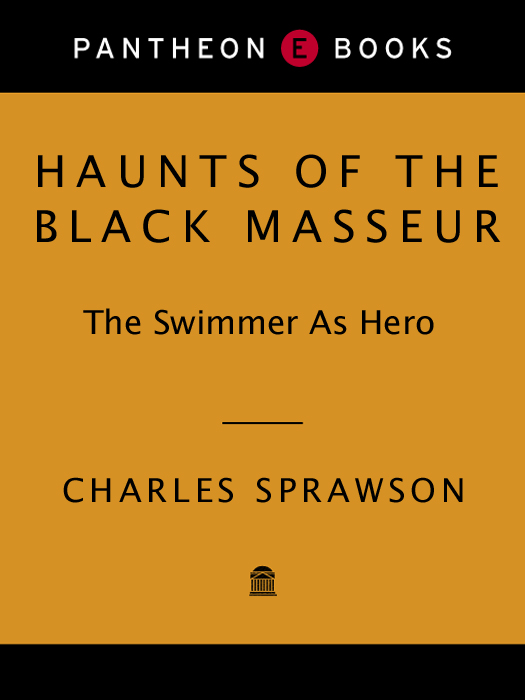
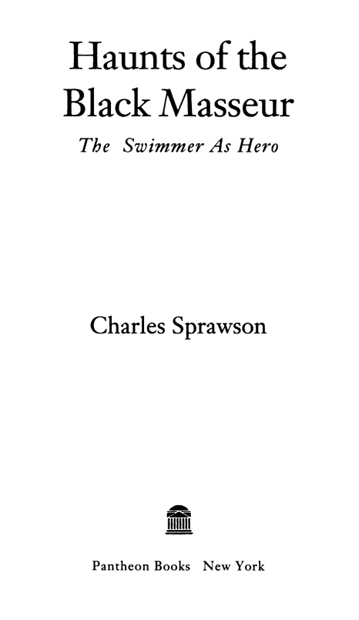
Copyright 1992 by Charles Sprawson
All rights reserved under International and Pan-American Copyright Conventions. Published in the United States by Pantheon Books, a division of Random House, Inc., New York. Originally published in Great Britain by Jonathan Cape, London, in 1992.
Text illustrations by Clare Sprawson
LIBRARY OF CONGRESS CATALOGING-IN-PUBLICATION DATA
Sprawson, Charles.
Haunts of the Black Masseur: the swimmer as hero/Charles Sprawson.
eISBN: 978-0-307-82364-9
p. cm.
1. SwimmingSocial aspectsHistory. 2. SwimmingPhilosophy. I. Title.
GV838.53.S63S68 1993 92-50471
797.21dc20
v3.1
For Ann Fenton
When I see a swimmer, I paint a drowned man.
Jacques Prvert, Quai des Brumes
Here you are gabbling Baudelaire or Donne,
Here you are mimicking that cuckoo clock,
Here you are serving a double fault for set,
Here you are diving naked from a Dalmatian rock,
Here you are barracking the sinking sun,
Here you are taking Proust aboard your doomed corvette
Louis MacNeice, The Casualty (In memoriam G.H.S.) on
the death of a friend drowned in mid-Atlantic during the War
The gods who left us hundreds of years ago in Naples are still in India, so its like going home for me. In India I can feel what it was like in Italy many years ago.
Francesco Clemente
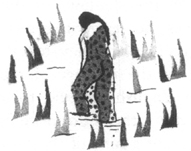
I LEARNT TO SWIM in India, in a pool donated to the school by the Edwardian cricketer Ranjitsinhji. I was the only English boy in the school. My father was the headmaster, and Sir K. S. Ranjitsinhji, the Jam Saheb of Nawanagar, its most eminent old-boy, though he was only one prince among many there. Sometimes his successor allowed us to bathe in the flooded subterranean vaults of his palace nearby, among columns that disappeared mysteriously into black water. On the walls of the palace above there still hung Tukes paintings of bathing boys that the Jam Saheb had collected during his cricketing years in England.
In this arid backwater on the western plains none of the other English seemed to swim at all. There were no pools in the gardens of the administrators, none in the cantonments for the soldiers. When they travelled to the hills for relief in the hot weather, it was principally to sail or row on the lake at Naini Tal. There hangs above me as I write a watercolour by Samuel Daniell, of Indian girls bathing and washing their hair in a jungle clearing, among the cataracts and pools of a river in southern India. In English paintings of India, Indians are shown diving from temple balconies or lounging in the shallows of the lakes. For the English themselves, however, it seemed that swimming was not quite acceptable. They felt they had to keep up appearances, in the manner of those portraits by Arthur Devis of Englishmen and their wives dressed formally just like his fathers exquisite figures in English gardens, with merely a hint of the exotic in a bending palm or the ragged leaf of a banana tree, or an Indian servant standing deferentially in the background. It was as though the English had taken to heart George Borrows precept that a gentleman should avoid swimming, for to swim you must be naked, and how would many a genteel person look without his clothes.
In the memoirs of soldiers and civil servants, swimming is hardly mentioned. Yet in the accounts of those English who travelled to India from motives of their own, as a means of self-discovery and fulfilment, to satisfy some mystical strain in their character, swimming seems an essential and enriching experience. Awoken one dawn in the middle of a forest by a panthers bark, the adventurer Eric Muspratt, who roamed the world to escape the contamination of civilisation, walks down to a lonely Hindu temple, a simple archway of stone with steps leading to a little lake of glass-smooth water. Palms fringed it and waterlilies floated on it. In bathing there at sunrise a spirit of worshipful thanksgiving came to me. The stillness lay on me like a benediction. In his spirited attempt on K2, laden down with innumerable volumes of poetry, Aleister Crowley was confronted one morning, in the foothills of the Himalayas, by a brilliant white curtain spread over a hillside, formed by crystalline deposits from a hot spring like that at Pamukkale in Turkey, above which the Romans set up a temple and where I lingered once for an entire day reading Pindars Olympian odes on a submerged column. Crowley climbed to the top of the curtain to the basin from which it proceeded, the largest of several similar formations, 31 feet in diameter, an almost perfect circle. It is a bath for Venus herself. I had to summon my consciousness of Godhead before venturing to invade it. The water streams delicately with sulphurous emanations, yet the odour is subtly delicious. I spent more than an hour reposing in its velvet warmth, in the intoxicatingly dry mountain air. I experienced all the ecstasy of the pilgrim who has come to the end of his hardships. On his ascents of Everest, Mallory bathed in the Kashmiri streams. Swimming for Mallory, like mountaineering, was an emotional and spiritual necessity. He would be filmed by Odell swimming decorously in a costume, then would strip it off, even finding a pool to dive into, and at length.
My earliest recollection of India is staring in the early morning through the muslin of a mosquito net at my father practising yoga on a small towel at the foot of his bed, twisting his body into contortions and postures that seemed strange for a headmaster. He had been influenced by recently reading Yeats Browns Lives of a Bengal Lancer, that ends with the author meditating in the Himalayas, awaiting the dawn after a night of prolonged discussion about the mysteries of love and devotion. Smoking charas from a hookah induced in Yeats Brown visions of crawling through keyholes, stepping over the Himalayas. The book that was made into a Hollywood film to celebrate the glamour of imperial India was in fact a description of a spiritual quest, an attempt to submerge himself in the sensuous and mysterious rituals of the East that held little appeal for the average colonial.
Shortly before I was dispatched to a school in England, my father took me on a three day train journey to the coast of southern India. We were given the use of a maharajahs personal carriage, with a metal balcony attached to the back where we sat throughout the day, longing to swim in the green rivers full of buffaloes and laughing boys as the train rattled over the bridges. Once we arrived in the South, our entire time there was devoted to bathing among the streams and waterfalls depicted in the Daniell engravings, sacred to the Hindoos and attended by innumerable devotees, though now rarely visited as their waters have been reduced by dams to a faint trickle that dribbles down the bare rock face.
It was to these southern rivers that Yeats Brown was drawn, where he found a glory and a grace in surrendering his body to their sacred water, usually by moonlight. The bedroom window of our small rest-house on Cape Cormorin looked out to sea. My father pointed out the very rocks where Yeats Brown and the swami once talked and meditated A hundred yards to the south of the Virgins shrine, one of the oldest temples at the tip of the triangle of India, is a smaller shrine for the worship of ancestors. Here we undressed, and swam out, a few yards, to two domed rocks, against which the rollers of the Indian ocean surge lazily, decorating them now and then with a lovely lace-work of foam. It was here, on the farthest rock, with no land between him and the Antarctic, that Vivekananda sat meditating on that evening when he took his high resolve to go out and conquer the West with the teaching of the Vedanta. Yeats Brown adds a footnote: In reading M. Romain Rollands account of how the pilgrim swam back to India, as if it were the Channel or the Hellespont, instead of five yards of fact, we have an illustration of how myths grow.
Font size:
Interval:
Bookmark:
Similar books «Haunts of the Black Masseur»
Look at similar books to Haunts of the Black Masseur. We have selected literature similar in name and meaning in the hope of providing readers with more options to find new, interesting, not yet read works.
Discussion, reviews of the book Haunts of the Black Masseur and just readers' own opinions. Leave your comments, write what you think about the work, its meaning or the main characters. Specify what exactly you liked and what you didn't like, and why you think so.




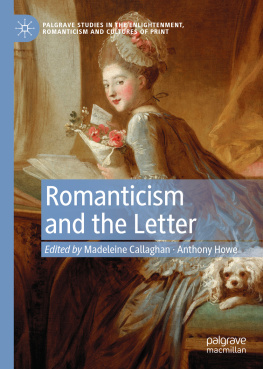


![Charles Sprawson [Charles Sprawson] - Haunts of the Black Masseur](/uploads/posts/book/142126/thumbs/charles-sprawson-charles-sprawson-haunts-of-the.jpg)
